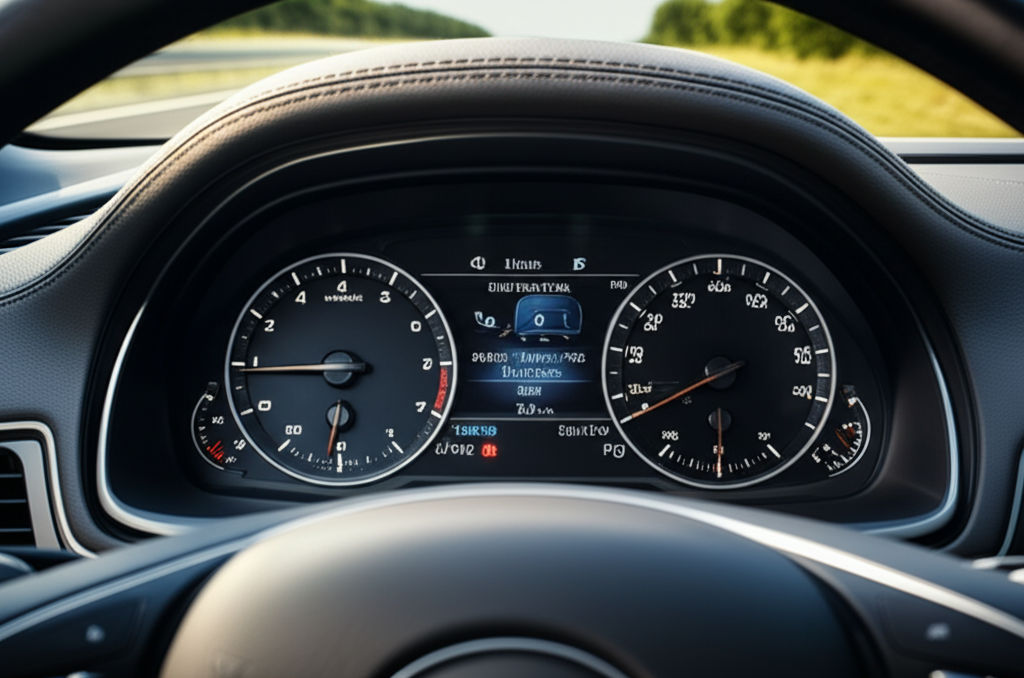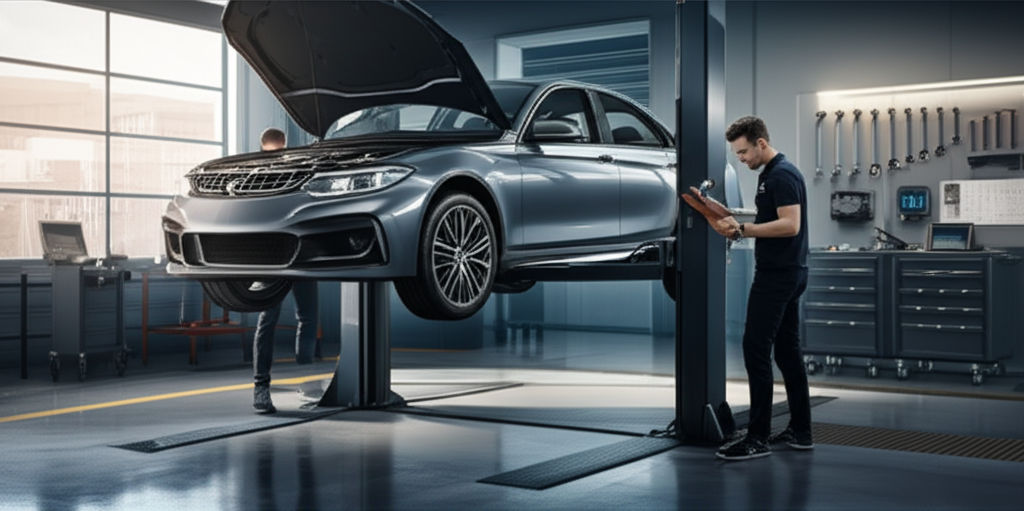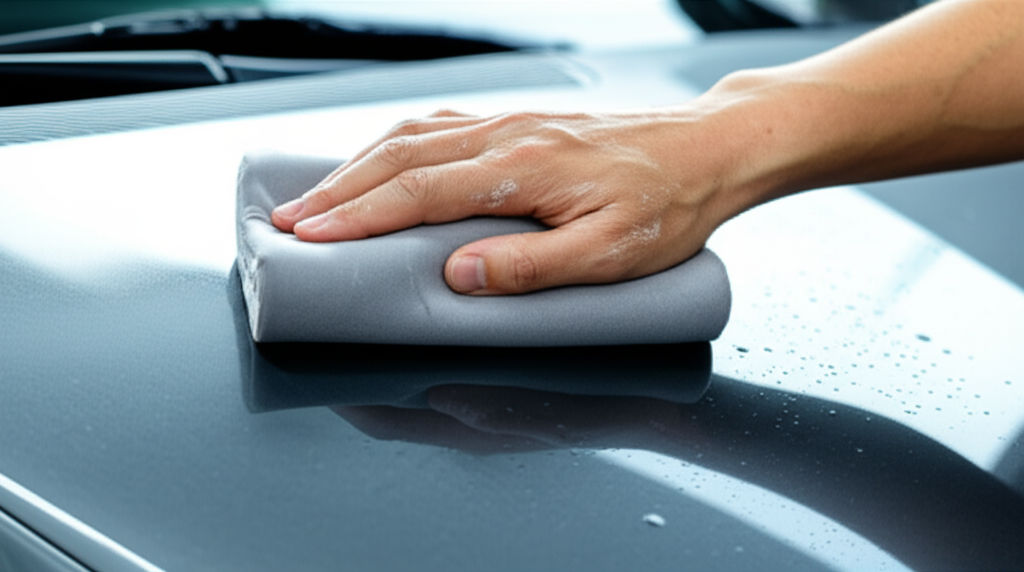Anything Automotive You Should Know Today
Ellie Moore

Photo: The automotive world is shifting! Learn about EVs, charging, and new tech to make smarter driving decisions for your wallet and the planet.
The automotive world is undergoing a seismic shift, propelled by technological innovation, evolving consumer demands, and a global push towards sustainability. For the average driver, staying informed about these changes isn't just about curiosity; it's about making smarter decisions for their daily commute, their wallet, and their environmental footprint. From the quiet hum of electric vehicles to the intelligent assistance of advanced safety systems, understanding the modern automotive landscape is key to navigating the roads of today and tomorrow.
This article will delve into key areas every driver should be aware of, offering practical insights and demystifying the latest trends. Whether you're looking to buy a new car, maintain your current one, or simply understand where the industry is headed, you'll find valuable information here.
The Electric Revolution: Navigating the EV Landscape Today
Electric Vehicles (EVs) are no longer a niche concept; they are rapidly becoming a mainstream reality. Global sales of plug-in electric cars reached 14 million in 2023, accounting for 18% of new car sales, and are projected to exceed one-fifth of global car sales in 2024. This surge is driven by a combination of environmental concerns, government incentives, and significant advancements in technology.
Why EVs are Gaining Traction
The appeal of EVs extends beyond their eco-friendly credentials. They offer a distinct driving experience that is often quieter and more responsive than traditional gasoline cars. Owners can also benefit from lower operating costs due to reduced fuel expenses and often lower maintenance needs, with potential lifetime savings of over $6,000 in repair and maintenance compared to an internal combustion engine vehicle (ICEV). Furthermore, battery technology continues to improve, with many new EVs offering substantial ranges and manufacturers providing warranties typically covering 8 years or 100,000 miles for their batteries.
Understanding EV Charging: Home, Public, and Fast
One of the primary considerations for potential EV owners is charging. There are generally three levels of charging:
- Level 1 (120V AC): Uses a standard household outlet. It's the slowest option, best for overnight trickle charging or for drivers with very low daily mileage.
- Level 2 (240V AC): This is the most common home charging solution, often installed by an electrician. It can add about 250 miles of range overnight, easily meeting daily needs for most drivers. Public Level 2 chargers are also widely available.
- DC Fast Charging (DCFC): Found primarily at public charging stations, these chargers deliver significant power, allowing for rapid charging, often adding hundreds of miles of range in under an hour. As of February 2025, there are over 210,000 public chargers available in the U.S., a number that continues to grow.
Range Anxiety: Is It Still a Concern?
"Range anxiety," the fear of running out of battery before reaching a charging point, was once a significant barrier to EV adoption. However, with improvements in battery technology and the expansion of charging infrastructure, this concern is diminishing. Many new EV models offer ranges exceeding 300 miles on a single charge. Planning routes with charging stops, much like planning for gas stations on a long trip, can effectively mitigate this.
Practical Tips for EV Ownership
- Understand Your Charging Habits: Most EV charging happens at home overnight. Assess your daily driving needs and consider installing a Level 2 charger if feasible.
- Explore Public Charging Networks: Familiarize yourself with apps and services that locate public charging stations, including DC fast chargers for longer journeys.
- Leverage Off-Peak Charging: Many utility providers offer lower electricity rates during off-peak hours, making overnight charging more economical.
Smart Cars, Safer Roads: Understanding Modern Automotive Technology
Beyond electrification, modern vehicles are increasingly becoming sophisticated computers on wheels, packed with advanced technologies designed to enhance safety, convenience, and connectivity.
Demystifying Advanced Driver-Assistance Systems (ADAS)
Advanced Driver-Assistance Systems (ADAS) are a suite of technologies that use sensors, cameras, radar, and software to assist drivers and improve road safety. These systems are designed to automate, adapt, and enhance vehicle technology, significantly reducing the potential for human error, which is a factor in a large majority of road accidents.
Common ADAS features you'll find in many new cars include:
- Adaptive Cruise Control (ACC): Maintains a set speed and adjusts it automatically to keep a safe distance from the vehicle ahead.
- Lane Keeping Assist (LKA) / Lane Centering Assist (LCA): Helps keep the vehicle centered within its lane, often by providing gentle steering inputs.
- Automatic Emergency Braking (AEB) / Forward Collision Warning (FCW): Alerts the driver to potential front-end collisions and can automatically apply the brakes if the driver doesn't react in time. FCW systems alone have the potential to reduce crashes by 29%.
- Blind Spot Monitoring (BSM): Warns drivers of vehicles in their blind spots. Blind Zone Detection could decrease crash incidents by 9%.
- Rear Cross-Traffic Alert (RCTA): Alerts drivers to vehicles approaching from the side when backing out of a parking space.
- Parking Assist Systems: Utilize sensors and cameras to help drivers navigate into parking spots, sometimes even controlling steering automatically.
While ADAS greatly enhances safety, it's crucial to remember that these are assistance systems, not fully autonomous driving. Drivers must remain attentive and ready to take control.
The Connected Car: Infotainment and Beyond
Modern cars are increasingly connected, offering a range of features that integrate with our digital lives. These "connected car ecosystems" use IoT (Internet of Things) technology to allow vehicles to interact with other cars, infrastructure, and cloud-based services. This connectivity brings benefits like real-time traffic updates, remote vehicle management via smartphone apps, and advanced infotainment systems that rival home entertainment.
Cybersecurity in Your Vehicle: What You Need to Know
With increased connectivity comes a growing need for robust cybersecurity. Modern vehicles contain dozens of computers managing critical systems like steering, brakes, and engine performance, making them potential targets for cyber threats. A compromised vehicle could lead to unauthorized access, data theft, or even manipulation of control systems, endangering occupants.
Manufacturers are implementing "security by design" principles, embedded firewalls, and regular software updates to protect vehicles. As a driver, you should be aware that:
- Your vehicle stores sensitive data, from GPS history to driving habits.
- Infotainment systems and telematics can be entry points for hackers.
- Keeping your car's software updated is as important as updating your phone or computer.
Essential Car Care & Smart Ownership in the Modern Era
Even with all the technological advancements, fundamental car care remains vital for longevity, safety, and efficiency. Smart ownership also involves understanding today's dynamic car market.
Beyond the Oil Change: Modern Vehicle Maintenance Must-Dos
Regular maintenance is the cornerstone of responsible car ownership, helping to prevent breakdowns, reduce costs, and ensure optimal performance. While oil changes remain crucial for engine lubrication and temperature regulation, modern vehicles require attention to other areas too.
Key maintenance tips include:
- Regular Oil Changes: Follow your owner's manual for recommended intervals, typically every 5,000 to 10,000 miles.
- Tire Pressure and Rotation: Proper tire pressure improves fuel efficiency and safety, while regular rotation ensures even wear. Check pressure monthly and rotate tires every 6,000 miles. You can use a penny to check tread depth; if Lincoln's head is fully visible when inverted into the tread, it's time for new tires.
- Fluid Checks: Regularly monitor coolant, brake fluid, transmission fluid, and windshield washer fluid levels.
- Filter Replacements: Engine air, cabin air, and fuel filters should be replaced regularly to maintain efficiency and air quality.
- Battery Health: Check terminals for corrosion and signs of swelling. A healthy battery is crucial for starting your car and powering electronics.
- Brake Inspection: Listen for squealing or grinding, and have pads inspected regularly.
- Software Updates: For modern, connected cars, software updates are vital for infotainment, ADAS, and other smart systems to function correctly and securely.
Adhering to a regular maintenance schedule, often found in your owner's manual, can significantly extend your vehicle's lifespan and save you money in the long run.
Navigating Today's Car Market: Buying and Selling Smart
The car market has seen significant shifts, with global chip shortages and supply chain disruptions impacting new car availability and prices. This has also driven up the sale and prices of used cars.
If you're looking to buy a car today:
- Do Your Homework: Research models, prices, and current incentives online
Finance & Investment
View All
October 6, 2025
Baby Boy Names Meaning WealthGo beyond keywords! Create expert SEO content that ranks high, satisfies E-E-A-T, and genuinely helps your audience. Get actionable strategies.
Ellie Moore

October 7, 2025
Business Financing Made SimpleExpert SEO content is vital for top rankings. Go beyond keywords with E-E-A-T, quality, and user intent to dominate today's digital landscape.
Ellie Moore

February 3, 2025
Beyond Finance Debt SolutionsElevate your online presence! Learn to craft expert SEO content that drives higher rankings, builds trust, and truly engages your target audience.
Ellie Moore

April 29, 2025
Honda Financing Made SimpleElevate your online presence with expert SEO content. Deliver value, build trust, and achieve higher rankings for sustainable business growth.
Ellie Moore

April 11, 2025
Why Financial Literacy Matters in the Digital AgeFinancial literacy is crucial in the digital age. Learn to manage money, avoid scams, and make smart financial decisions in a tech-driven world.
Ellie Moore

March 16, 2025
Finance Calculator Easy BudgetingGo beyond keywords! Discover expert SEO content: the powerful blend of E-E-A-T, deep knowledge & optimization for higher rankings & trust.
Ellie Moore
Insurance
View AllClimate change impacts are rising—learn how climate risk insurance offers protection against extreme weather and environmental losses.
Ellie Moore
Unlock the secrets to getting cheap auto insurance fast! Our guide helps you find the best rates and reliable coverage, turning a daunting task into a financial...
Ellie Moore
Explore aviation insurance options, from aircraft liability to passenger protection. Secure the skies for your operations!
Ellie Moore
Protect your home and financial future. Our guide to essential homeowners insurance helps you find comprehensive coverage and the best rates for peace of mind.
Ellie Moore
Why are millennials delaying life insurance? Explore the trends and factors influencing their decisions.
Ellie Moore
Navigate healthcare's future. Discover essential health insurance companies for robust, affordable coverage, ensuring peace of mind for policyholders & pros.
Ellie Moore
Education
View AllExplore how emotional intelligence impacts academic performance. Learn strategies to help students develop emotional skills for better learning outcomes.
Read MoreCompare Montessori and traditional education methods. Discover which approach is more effective for fostering creativity and independence in students.
Read MorePlay is crucial in early learning! Discover how play-based learning enhances cognitive, emotional, and social development in young children.
Read MoreMultilingual education promotes diversity and cultural understanding. Learn why it matters and how it benefits students in a globalized world.
Read MoreHelp students master metacognition! Learn how teaching students to think about their thinking can improve problem-solving and critical thinking skills.
Read MoreTake learning beyond the textbook with experiential education. Discover how real-world experiences create lasting knowledge and skills.
Read MorePopular Post 🔥
View All
1
2
3
4
5
6
7
8
9
10
Health






Automotive
View All
August 13, 2025
VIP Automotive Premium Service For Your Car
Elevate your car care with VIP Automotive Premium Service. Discover proactive, personalized maintenance for peak performance, longevity, and an ultimate driving...

July 26, 2025
Gary's Automotive Tips For Smooth Driving
Unlock the secrets to truly smooth driving with Gary's expert tips! Boost safety, efficiency & extend your car's life.

August 16, 2025
Automotive Holdings Group Limited Overview
Uncover the impact of Automotive Holdings Group (AHG) on Australia's car market, its rise, and its pivotal acquisition by AP Eagers.

July 21, 2025
Williams Automotive Care And Service Insights
Ensure a healthier, safer, and longer-lasting vehicle. Learn proactive car care insights from Williams Automotive to prevent costly repairs.

August 5, 2025
What You Need To Know About Cee Jay Automotive
"Cee Jay Automotive" isn't one company. Explore its diverse forms, from body repair to auto suppliers, and what to know about each.

July 31, 2025
How To Use An Automotive Clay Bar Effectively
Unlock a pristine car finish! Learn how to use a clay bar to remove hidden contaminants, boost shine, and protect your paint. Get pro results at home.

















